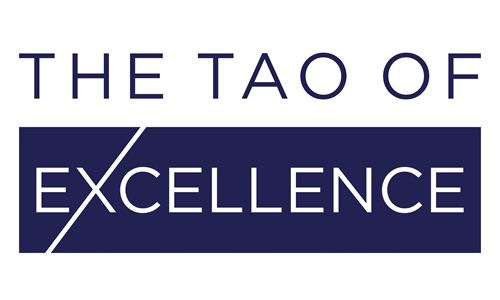Quality Implementation Manager Deepa Rajagopalan talks to Henrietta Shirley about bridging the gap between regulation and innovation in medtech. There are many aspects to managing an MDR project. From looking at every facet of the MDR in relation to a medical device, to expertly planning and managing its implementation timeline. Deepa Rajagopalan’s work ensures that manufacturers can meet their new regulatory responsibilities, and additionally specialises in process improvement activities. Here we look at two of her most recent projects and the insights she’s gained.
[HS] You recently held a “Tactical Session” in Schaffhausen. What was the drive behind that?
[DR] We wanted to share our knowledge of how to work with Notified Bodies under the MDR and engage with manufacturers face-to-face to discuss this key topic. It’s an intensive and interactive workshop format that’s designed to deliver the information and impart knowledge, but it became clear quite quickly that manufacturers are not yet at this stage MDR implementation.
Our audience was almost exclusively made up of SMEs, which isn’t surprising given that 95% of medtech manufacturers in Europe are SMEs, but the general consensus was that manufacturers are still waiting for step-by-step guidance on how to begin this process.
That session showed us that there is a significant gap between what manufacturers expect to receive and what they are getting. Since then we’ve been looking at ways that we can bridge that gap, from talks and workshops to online resources that can translate exactly what is written in the MDR and how manufactures should proceed. As a start, we published an summary article in English and German last week that links to wider articles and information on regulatory strategies for MDR implementation.
[HS] What were the main questions manufacturers had in the session?
[DR] Outside of how they should begin implementing the MDR, they wanted to know what incentive Notified Bodies have (other than profit) to uphold their side of the MDR. How will the industry ensure that they are doing the right job? I think people are still sceptical that if something does go wrong, Notified Bodies will be equally responsible as the manufacturer. Previously, the MDD did not define where the responsibility lay for ensuring the safety of a product, and in the public eye that fell solely on manufacturers.
[HS] Are those lines of responsibility now clear?
[DR] On paper, yes. Notified Bodies for example will now be monitored by Competent Authorities (CA) and audited every three years after its notification, and then every fourth year after that to maintain their designation. They will also be assessed once a year by the CA to ensure that they are fulling their obligations, and the plan to monitor an NB will be reviewed by the MDCG and the European Commission. The CA’s monitoring of an NB will also include an observed audit by the NB of a manufacturer and a review of the NB’s assessment of the manufacturer’s clinical evaluation documentation and tech documentation (see Article 44 for details).
Eudamed will also hold all the certification for a device. If there is an issue it will be immediately uploaded to a device’s profile and investigated, and that report is accessible to healthcare professionals and the public alike. These levels of transparency and monitoring mean that problems can be caught and reported early and efficiently. It also means that if somebody hides or intentionally supresses negative results, that person will be breaking a clearly defined law.
[HS] During the session you presented part of your talk Reimagining the relationship between regulation and innovation for the Medtech & Pharma Platform conference in Basel this week. Did that contribute any further insights?
[DR] Yes! My MPP talk began with a survey to investigate how manufactures see regulation effecting innovation. The uptake for the survey was strong, but in the main the responses came from larger organisations. That really puzzled us. We were also aware that it could skew the results as larger companies have more resources.
In the Tactical Session however, the audience of SMEs demonstrated that manufacturers irrespective of size share the same concerns and challenges in MDR implementation—the top one of which is the availability of clinical data. This is why the ‘grace period’ for medical devices is so vital. It gives manufactures time to adapt the clinical evaluation process for MDR certification.
Currently, the grace period only applies to Class II and III devices. Class I devices that need a clinical evaluation for their CE mark are still waiting to see if they will be granted the same conditions—especially as this will be the first time they will produce a clinical evaluation and need an NB for CE marking. Whilst relatively small in value, Class I devices have an enormous impact in the industry, without which the industry cannot safely function.
[HS] What drew you to investigating the connection between regulation and innovation?
[DR] I’ve been working with a client for the past two of years to ensure that they will be compliant on time. This client has strong clinical data with some trials running for close to 10 years. They see clinical data as the backbone of their product and the one thing that will help their device to survive on the market.
We started thinking—is this the same for all manufacturers irrespective of their size or product? We have seen the regulatory difficulties our customers face and we wanted to find out what people actually think, because ultimately experience drives behaviours. It’s also an interesting concept given Switzerland’s international reputation for innovation.
We wanted to know if the market is split. Is there one side with manufacturers that innovate and another side where start-ups innovate and don’t get involved in regulations? And we wanted to hear from everyone. We spent close to two months drafting the questions alone.
Without a doubt, collecting sufficient clinical data to comply with the MDR is going to hit many companies hard. One start-up told me after our Tactical Session that Europe presents such a challenge that they’re investigating other markets such as Asia first.
Manufacturers are looking for allies. They need support or a pathway that can bridge the gap between regulatory responsibility and business. The EU’s new regulations may be intimidating to most manufactures, but to say that regulation hinders innovation is not exactly right. There are other factors involved, the most heavily weighted of which is finance.
Medical device research requires a lot of funding and support if the product is to reach the market. Clinical trials are expensive and time-consuming, and I believe there is a gap in the market there. I hope this talk will move us all a step closer to closing that gap.
Deepa Rajagopalan’s talk ‘Reimagining the relationship between regulation and innovation’ will be presented at this week’s Medtech & Pharma Platform conference as part of Session 3 ‘Are new regulations going to slow down innovation?’ Other speakers in this session include Bassil Akra, Bernhard Bichsel and Elodia Di Renzo, and chaired by Karin Schulze. We look forward to seeing you there.
To learn more about our services explore our website or contact us for details. Follow us on social media to see our weekly articles and updates on the medtech industry and regulatory affairs.

